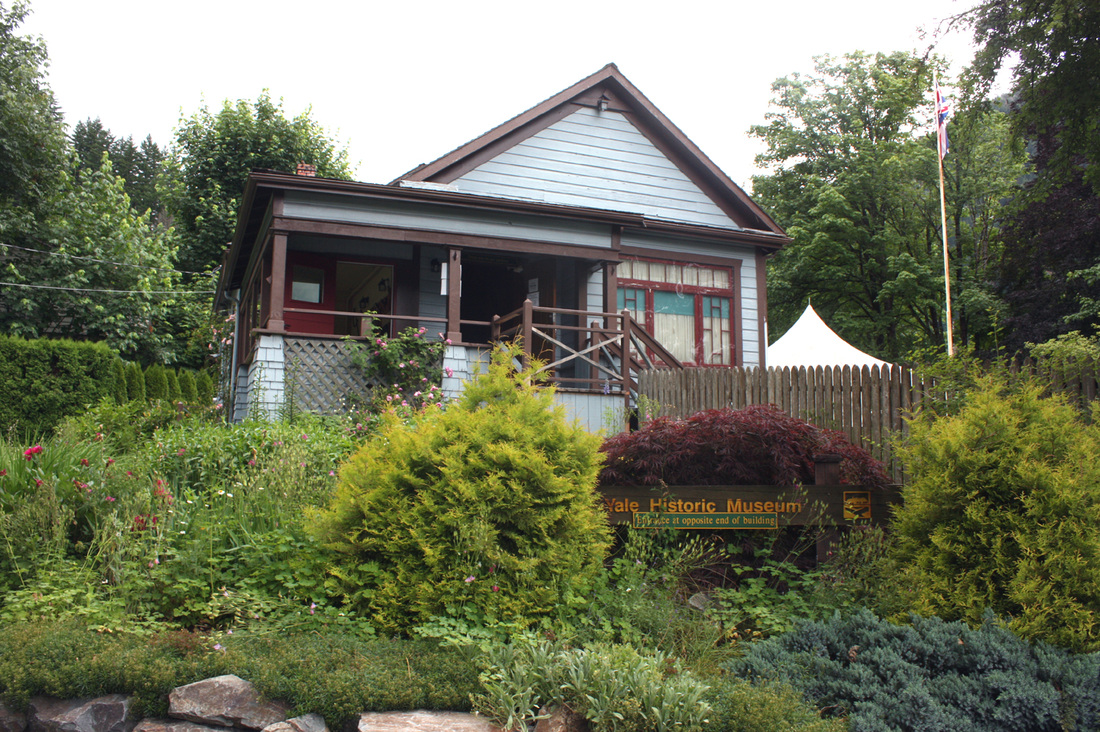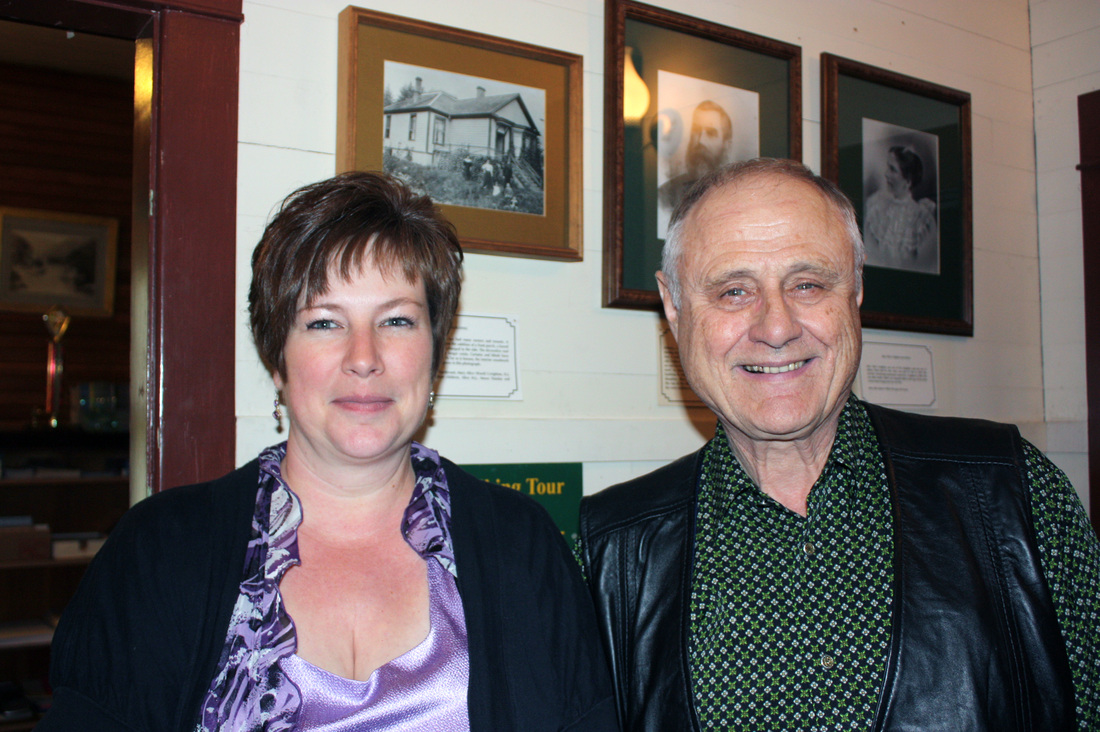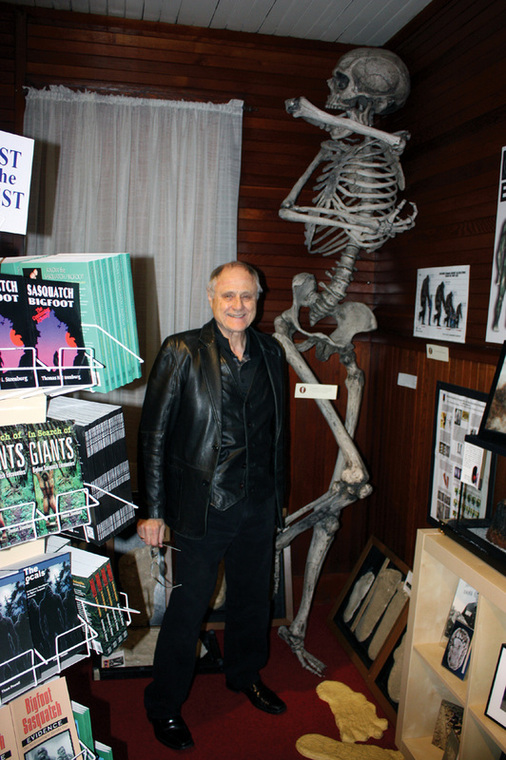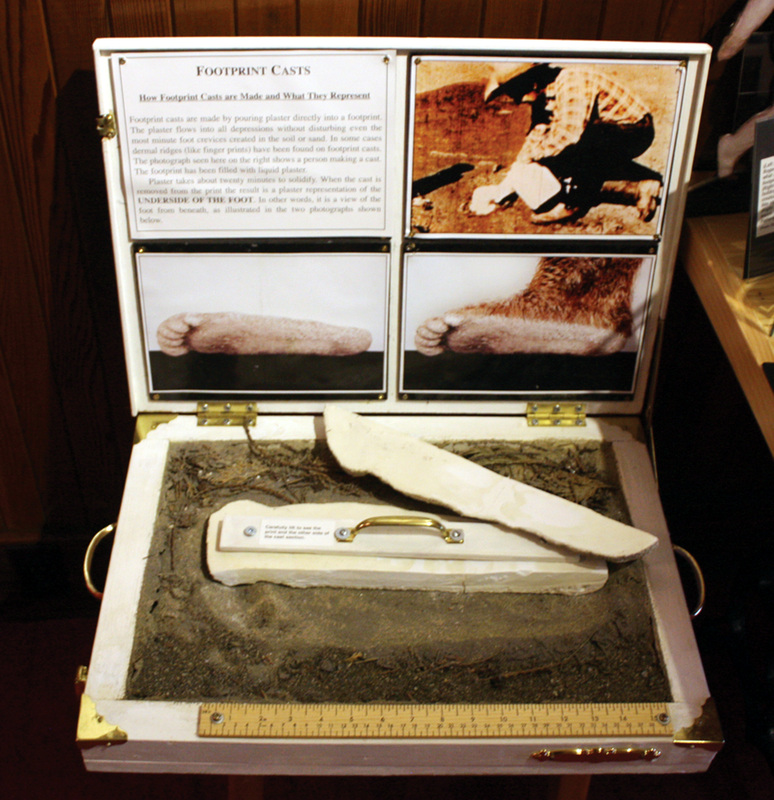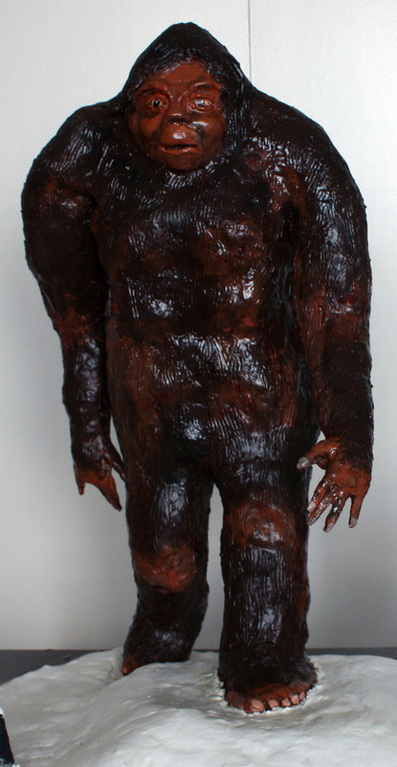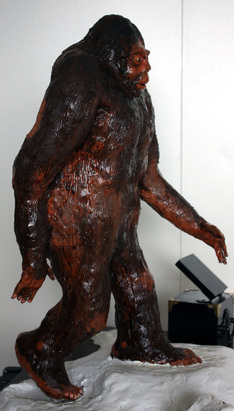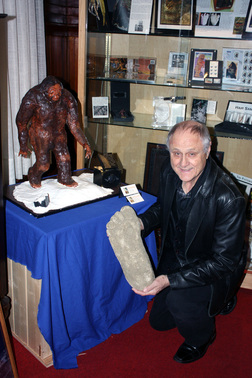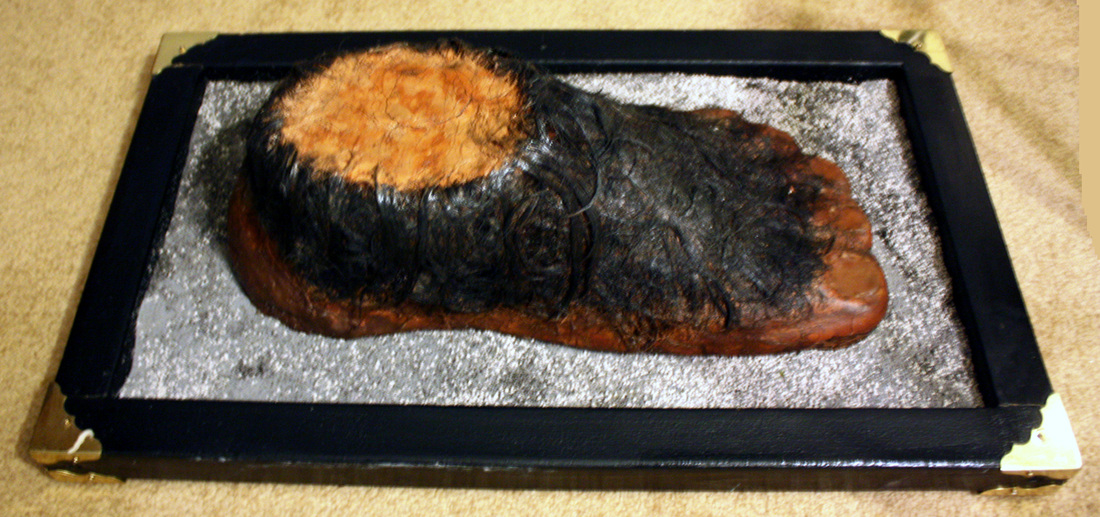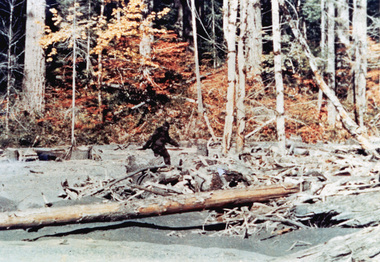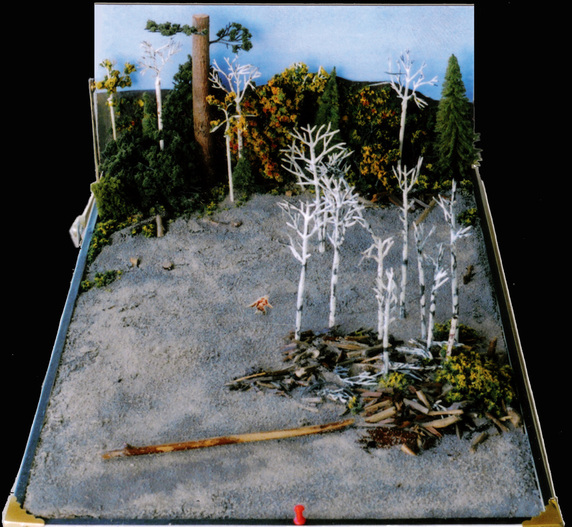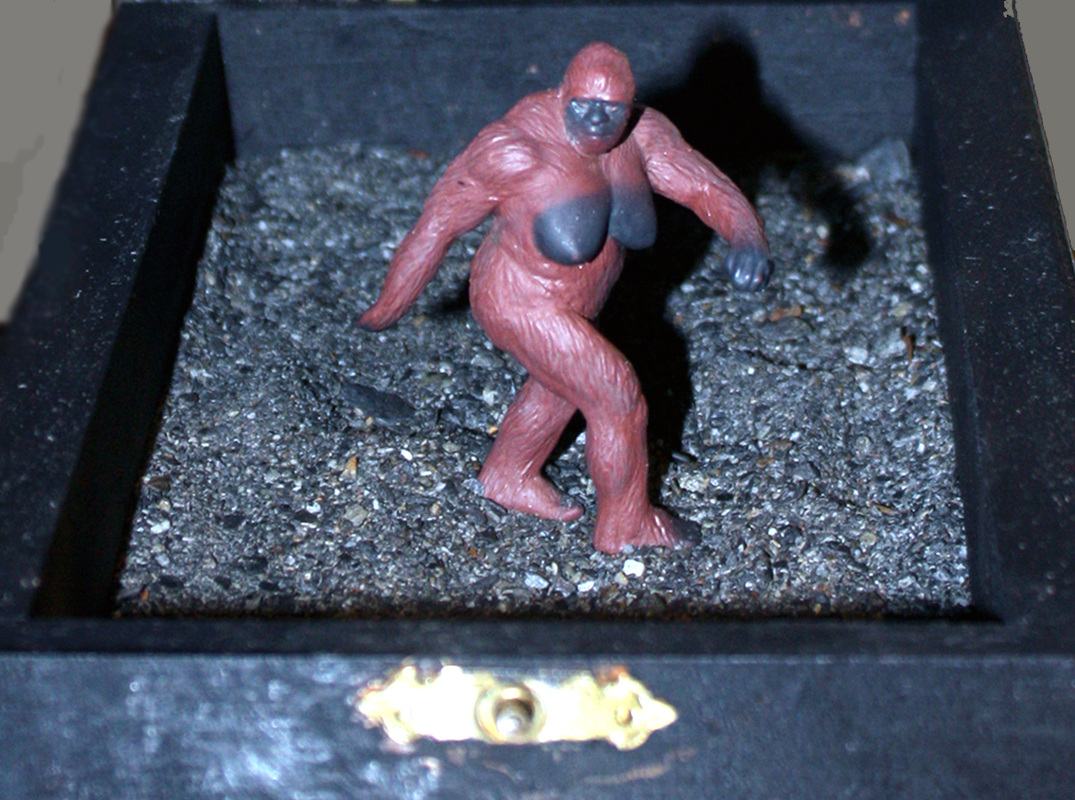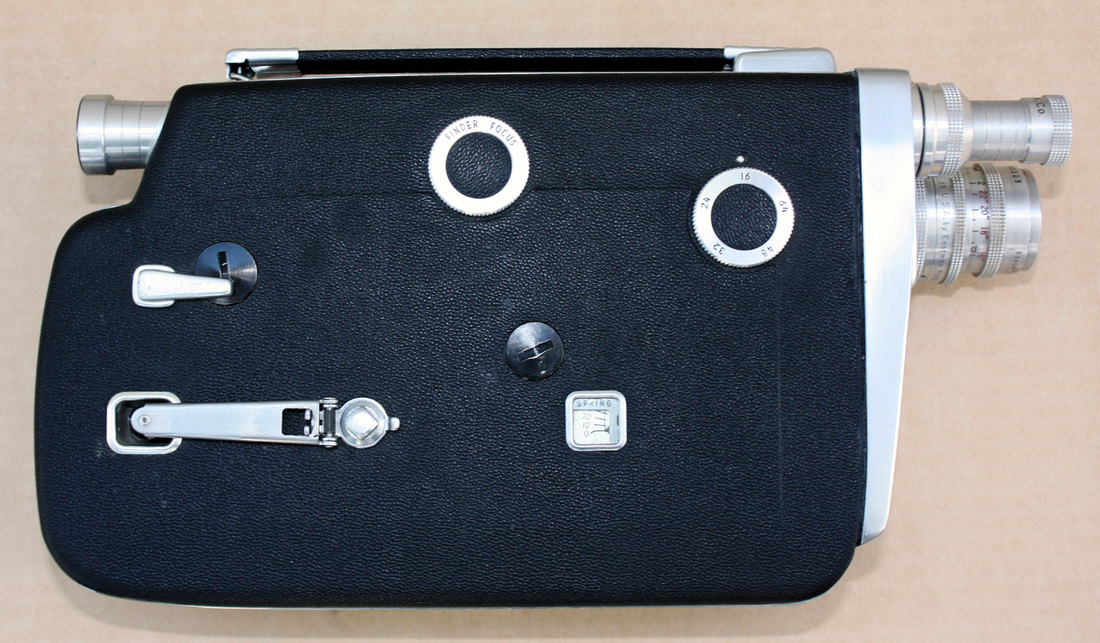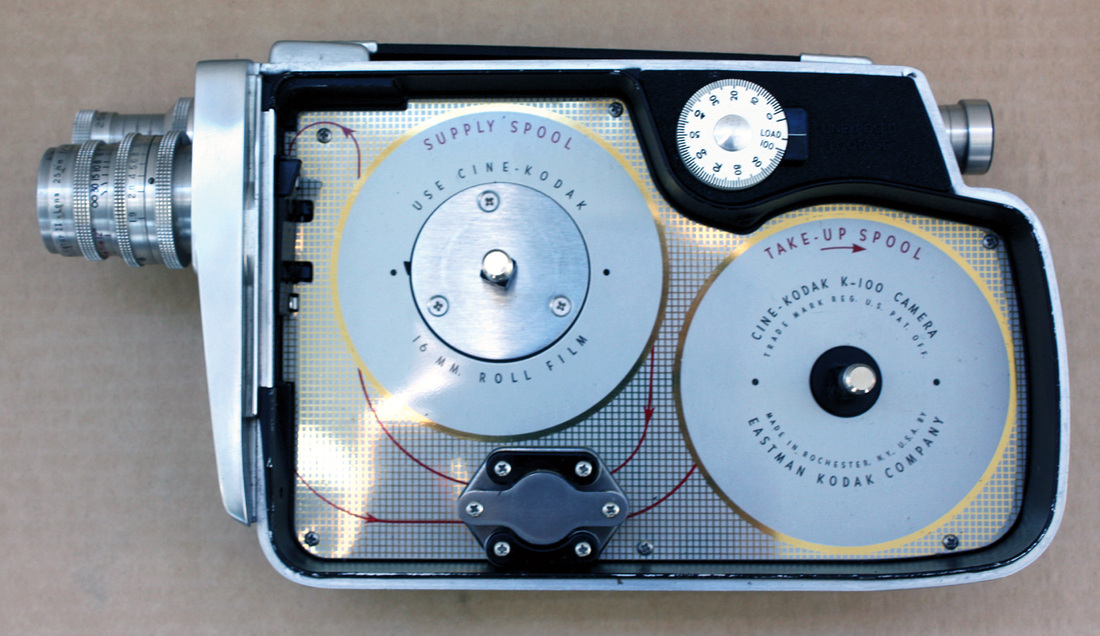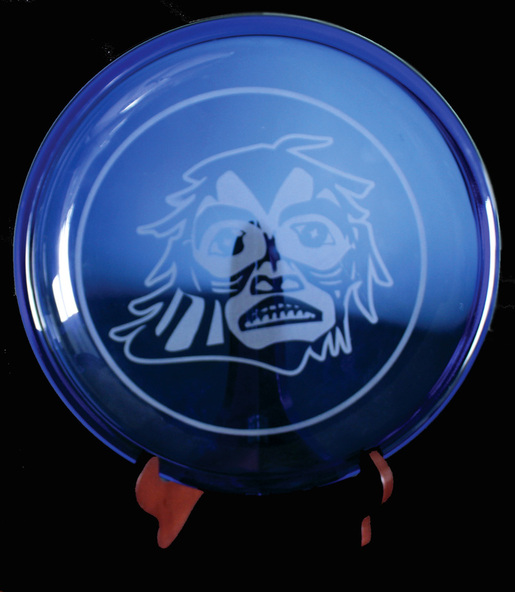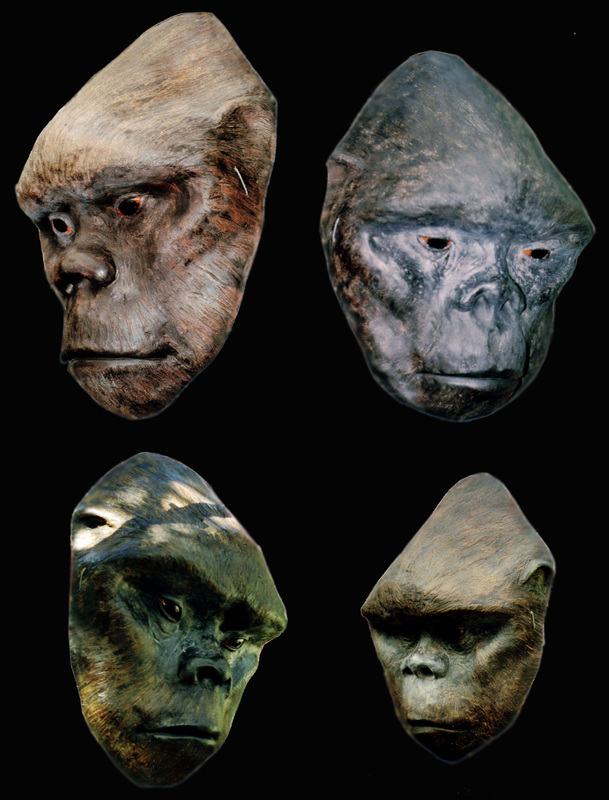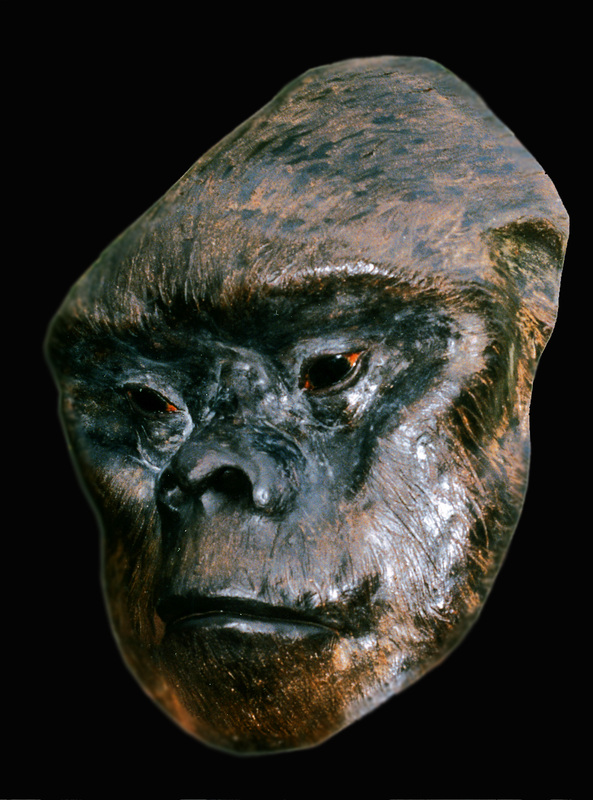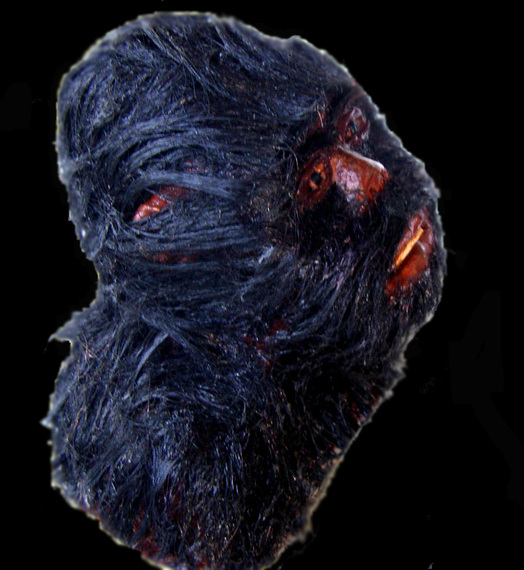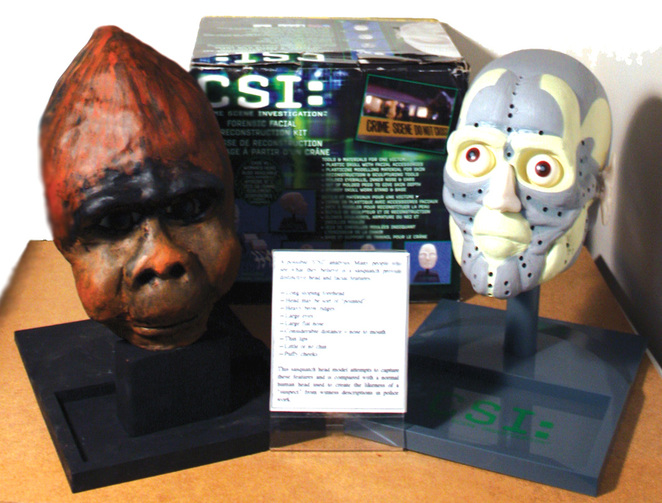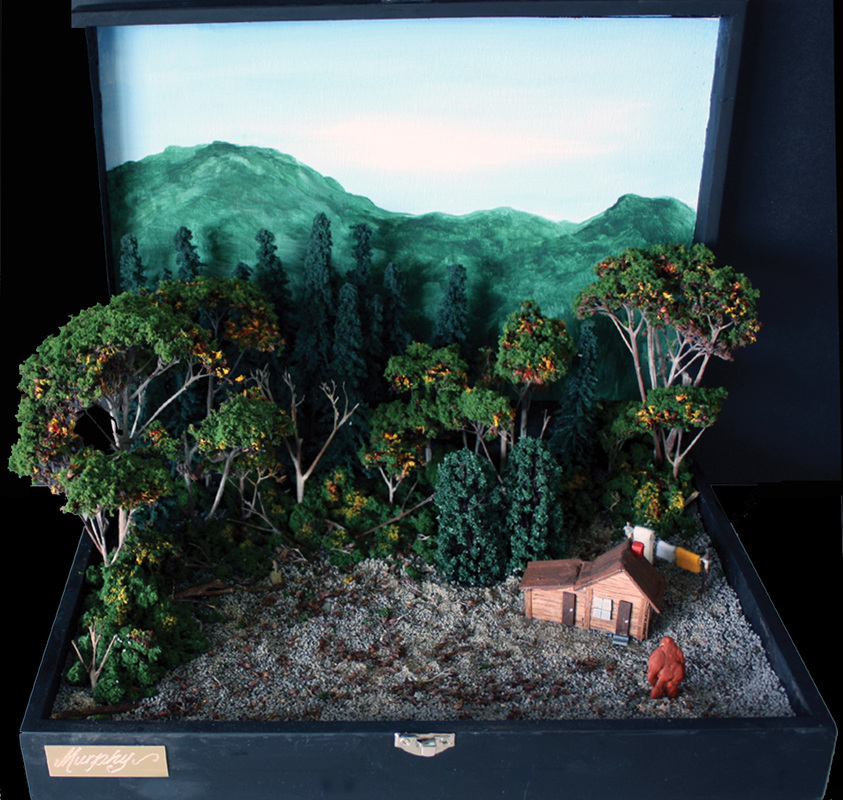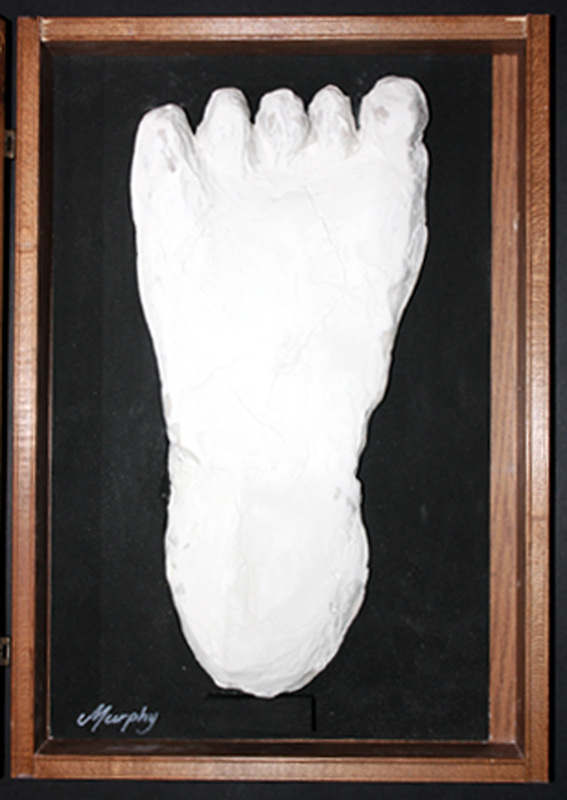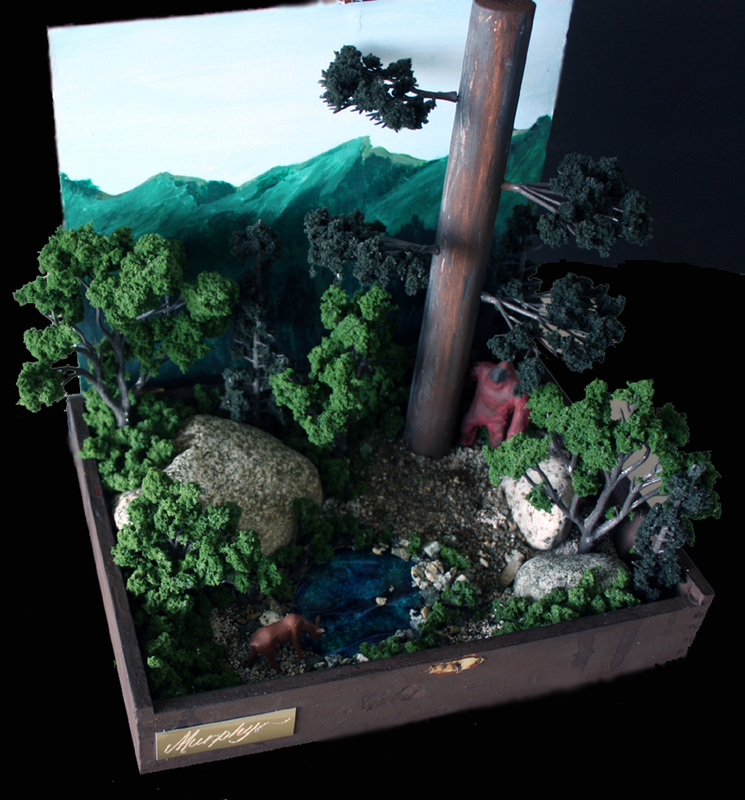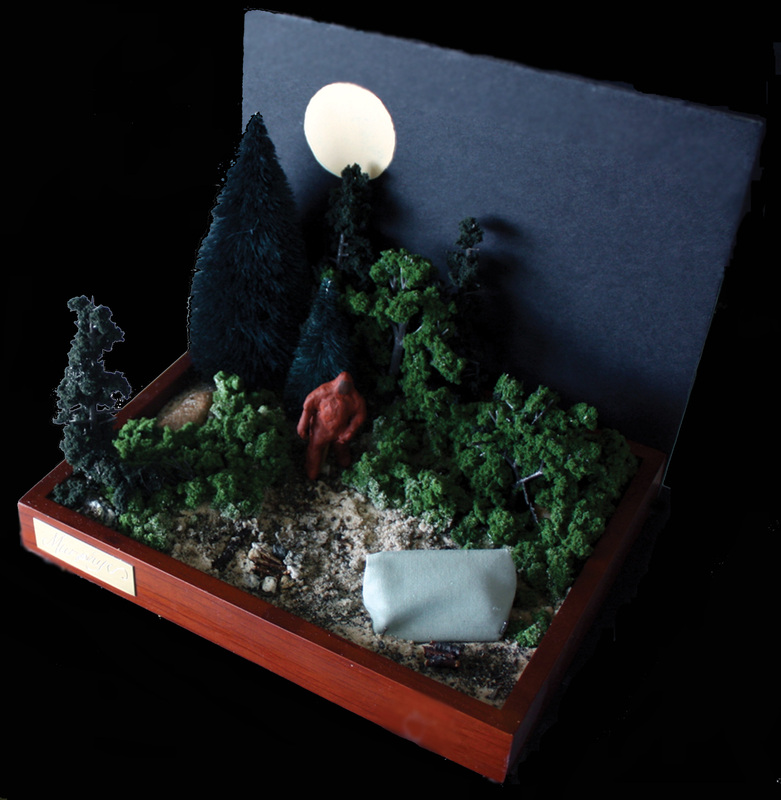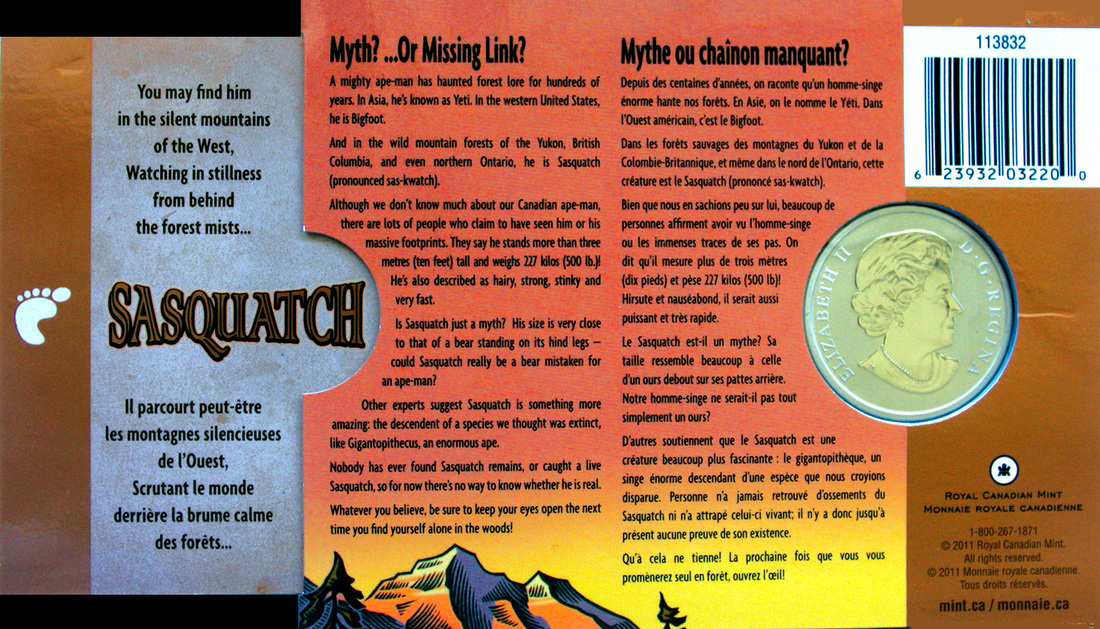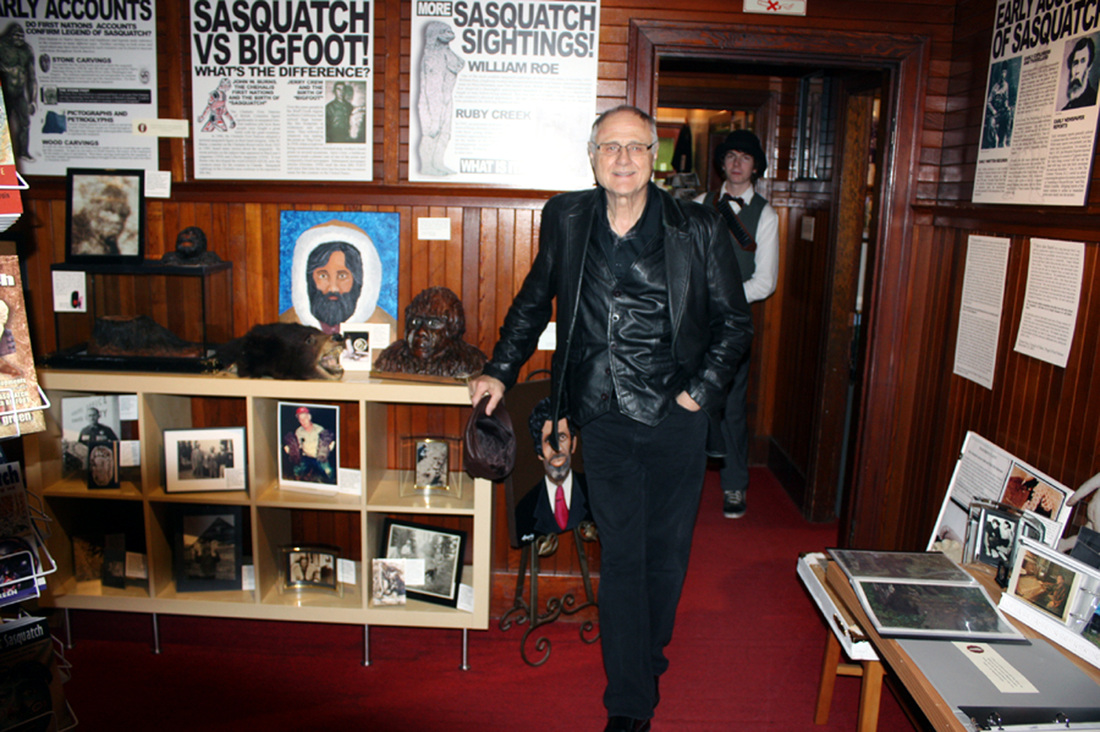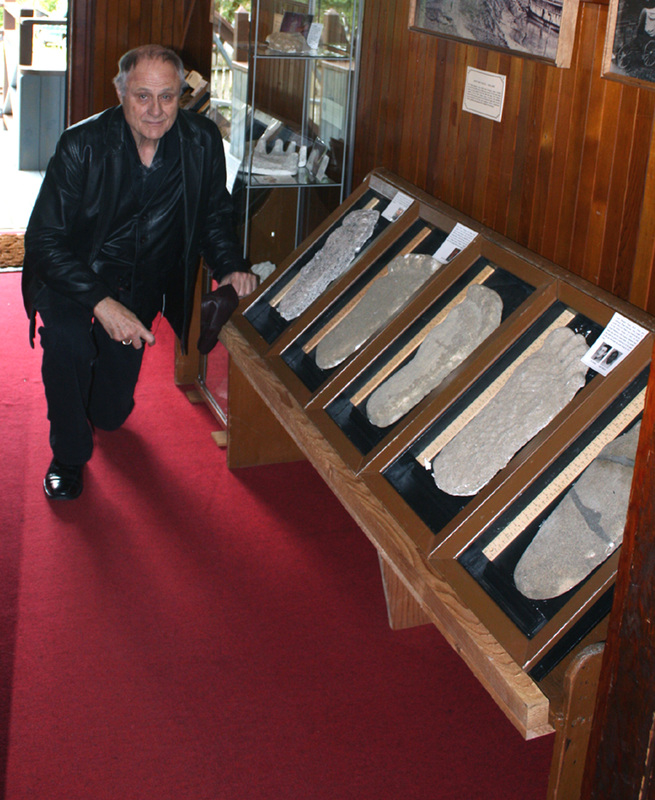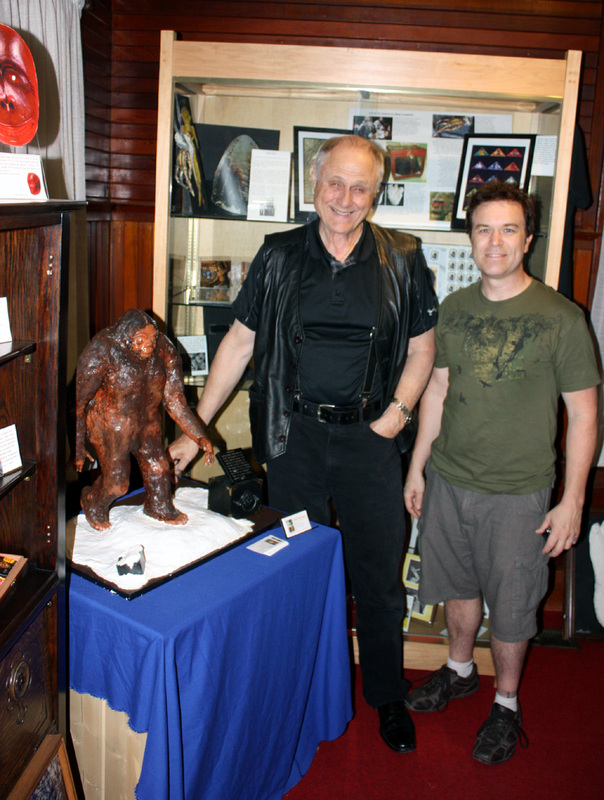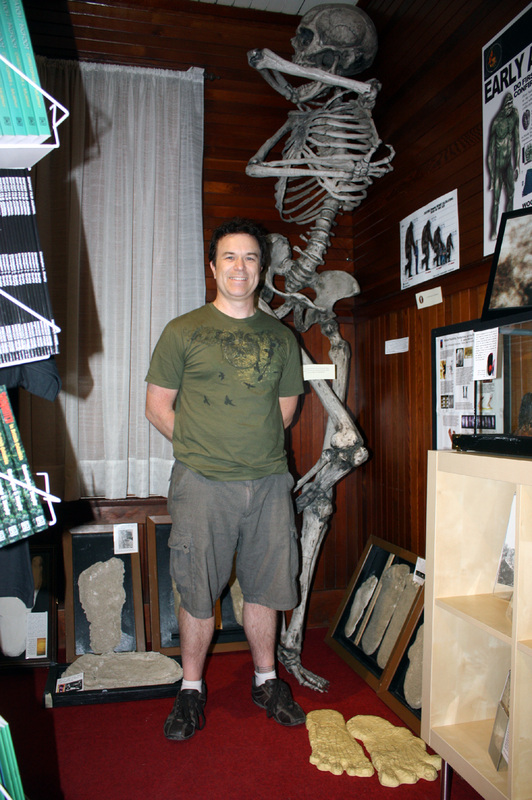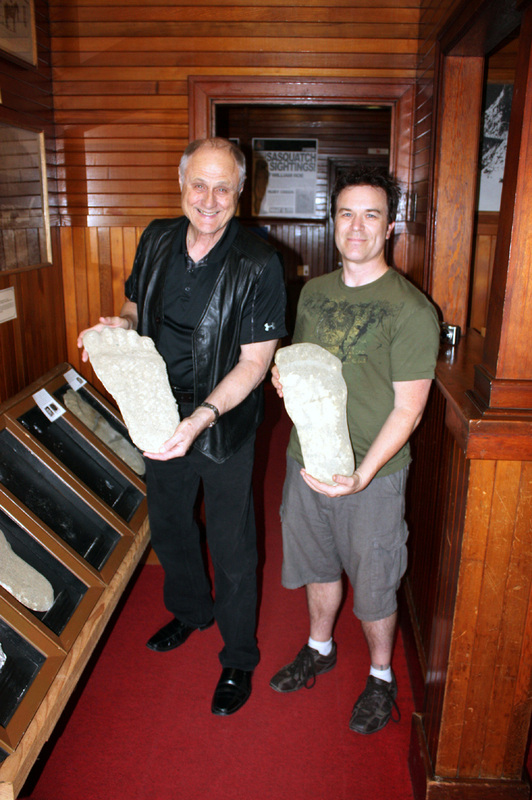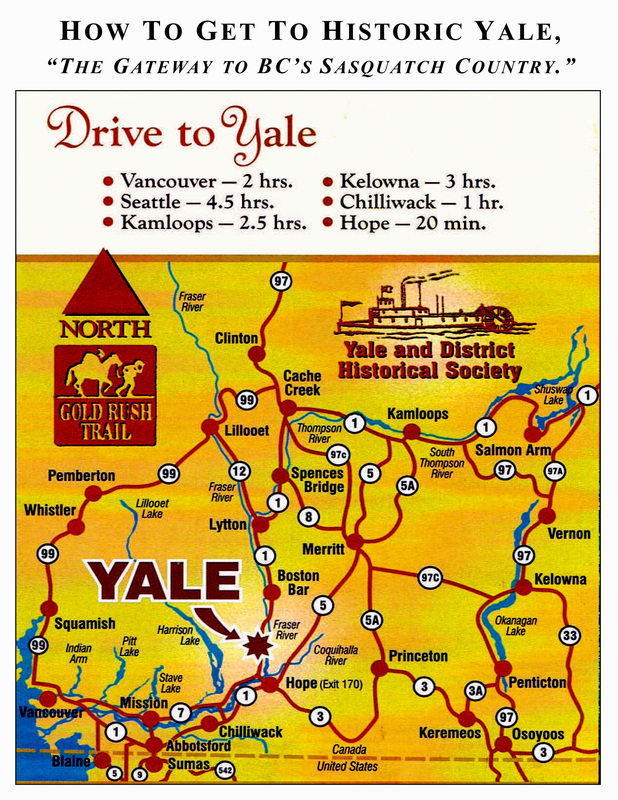OVERVIEW OF THE SASQUATCH
AND OTHER HOMINOIDS
Museum Panels on the Sasquatch, Russian Snowman, Yeti and the Yowie - (A mini presentation on just the facts. Adobe Reader Required)
The Yale, BC, Historic Site Sasquatch Exhibit
NOTE: Only exhibited three-dimensional items are provided here, and may not be on
exhibit in the same way. Plaster casts, skulls or other artifacts previously provided
have been excluded to avoid repetition. I have, however, provided a “walk through”
at the end that gives a good sense of the entire exhibit.
NOTE: Only exhibited three-dimensional items are provided here, and may not be on
exhibit in the same way. Plaster casts, skulls or other artifacts previously provided
have been excluded to avoid repetition. I have, however, provided a “walk through”
at the end that gives a good sense of the entire exhibit.
|
The town of Yale is about 113
mile east of Vancouver. It is currently a very small community, but during the gold rush in the mid to late 1800s had a population of up to 15,000 and was the largest town in the West north of San Francisco. It was also the wildest—a veritable den of vice, violence and lawlessness. Tombstone, Arizona, paled in comparison. Shown here is Creighton House which is now the Yale Historic Site Museum. |
|
The museum curator is Deb Zervini, seen here with me in September 2011. I was simply visiting the museum with family and mentioned my latest book about Yale, whereupon the sasquatch
became the conversation. Deb said that she would love to have a sasquatch exhibit and things went forward on a very positive note from there. |
|
A giant (9 feet tall) iron human skeleton (plastic head) provides a little insight as to what a sasquatch skeleton might look like if one were ever uncovered. This skeleton was made by students at a university in Arizona, probably in the 1970s. For many years it graced the lobby of a motel and caught David Hancock’s eye some time in the distant past. He took a photograph of it which
he eventually showed to me. I tried to get it for my Vancouver Museum exhibit, but this did not work out. When the skeleton became available, David obtained it, thus providing me with a “show piece” for future sasquatch exhibits. (Although nothing but bones, it weighs some 300 pounds). |
|
Footprint plaster casts are the mainstay of any sasquatch exhibit.
This presentation shows how casts are made and exactly what they represent—a view from BELOW the foot. This is important for the numerous grade school children who are taken to museum exhibits. The sasquatch is high on the list for these future researchers (they are my biggest fans). |
|
This is a clay sculpture I created in 2011/12. The creature is not only ugly, it’s kind of comical. For sure, if there were an animal beauty contest, primates would not even make the top 100. For those who might think the sasquatch looks like a champion body-builder covered with hair, I think you are sadly mistaken. Of the thousands of sighting reports, I have not found one that gives the creature Greek god features. Indeed, we see the complete opposite—a very large, scruffy, frightening thing that has a terrible odor. I used as much as I could from sighting reports in British Columbia to create the rather unflattering work. If the creature is a “human” of some sort, then it goes back a long, long way.
|
|
I am shown here with my sculpture at the museum. I am holding a 16-inch footprint cast. Please try imagine how large the sculpture would need to be to have feet the size of the cast. Now use your imagination to bring the creature to life. Is there any wonder why people “forget themselves” when they see something like that? Even if they can retain their composure, how close do they want to get to the oddity? These are major factors that limit photographic evidence.
|
|
This is a clay foot I created to get a simple appreciation of how a sasquatch foot might appear from above. However, it does serve to illustrate an important point. The sole of the foot is an actual 16-inch plaster cast. It is totally buried in the soil as would be the case with soil of this nature given the weight of the creature. However, if the soil were softer, then even more of the foot would register. If it were harder, then less would register. I believe the size of a footprint can vary as to the size of the actual foot by about 8% (larger or smaller) depending of the type of soil. Many footprints found that only marginally make an impression were made by a foot considerably larger than the impression seen. A 12-inch impression (human size–higher range) could have indeed have been made by a 13- inch, or larger, foot (sasquatch size–lower range).
|
|
An artistic rendering (acrylic on canvas) of
Roger Patterson. He lived in Yakima County, Washington, which has a highly “Western” culture--cattle ranches, farms horses, Western attire, and so forth. Roger had his own horse and participated in rodeos. He invented a device called the “prop lock” that was used to more efficiently support fruit tree branches. |
|
A very unique item I obtained at a gift shop was this plate engraved with a sasquatch head. It was created by Ron Austin, a talented artist, who designed the logo for
the Chehalis First Nations Band in British Columbia. The head seen here is the same as that on the logo, which is reminiscent of the creature in the Patterson-Gimlin film when it turns to look at the two men. |
|
Vancouver artist, Penny Birnam, created four sasquatch heads for my Vancouver Museum exhibit
(2004). I provided her with images from the Patterson- Gimlin film for inspiration. I expected only one head, but she created four, all different in appearance. Penny had reasoned that the sasquatch were likely similar to humans with individual facial features. |
Penny gifted me one of the heads, shown on the right, which I now use for museum exhibits. Penny has created many marvelous animal heads. She has reasoned that perhaps her creations will avoid the need for at least some “trophies.” Indeed, perhaps we all need to start thinking along those lines.
|
|
A small clay sculpture (4 inches high) with “glued-on hair.” It was made as an experiment to see if one can in fact “glue-on” hair. Facilities that offer a solution to baldness do “glue-on” head hair as a last resort. However, constant (and expensive) maintenance is needed (skin perspires and sheds cells). Could
hair be glued-on to some type of modern tight-fitting synthetic fabric? I suppose it’s possible, but not in the 1960s. Whatever the case, it is an extremely difficult and time-consuming process and I doubt very much that it has been used to hoax a sasquatch as one scientist has suggested (gluing hair onto long underwear is highly questionable). |
As to the sasquatch, hair is an interesting subject. Non-Native human males have continually-growing head hair and facial hair; females have continually growing head hair, but no facial hair. Native North Americans are the same except males and females do not have facial hair. It appears those males who do, reflects interbreeding with Europeans. If the sasquatch is human-related, then males likely have to cut their head hair and facial hair at some point. However, male facial hair effectively eliminates a direct sasquatch connection with Native people, whose males do not have such hair. If we now “cross the gap” and consider a direct sasquatch connection with other primates, such as gorillas and so forth, then there is no issue. These animals have non-continually growing head hair and facial hair in both males and females.
A comparison between the head of a bear and that of a sasquatch. Authorities often say sasquatch sightings, even those at close range, are likely bear sightings. Native people and experienced woodsmen are often insulted when told that they probably saw a bear. The differences are beyond obvious in both the head and the body.
|
A diorama of the Ruby Creek incident, September 1941. A sasquatch approached the Chapman house causing Mrs. Chapman to flee with her children. Footprints 17 inches long were found on the property along with other evidence of the unwelcome visitor. A cast was made of a print and later traced on brown paper. To the left is a clay scale model of the tracing.
|
Diorama of a sasquatch watching a fawn drinking from a little pool of water. We believe deer are a food source for sasquatch, so scenes of this nature likely occur. How do sasquatch catch and kill deer? They apparently have the speed necessary and are probably very efficient at throwing rocks. It has been reasoned that if a rock lands near you when out in the woods, the miss was on purpose.
Diorama showing a sasquatch approaching a camper's tent in the dead of night. There a number of accounts of campers hearing strange noises and seeing frightening shadows on their tent walls. They are generally too afraid to peek outside. There has never been a confirmed account of any sasquatch aggression in these cases, so what might be happening here? It appears sasquatch are simply very curious which is the case with animals of higher intelligence, especially domesticated dogs and cats.
Canada’s sasquatch coin and presentation case (front and back). Canada is the only country that has issued a coin and stamp featuring the sasquatch. A stamp was issued in 1990.
Museum “Walk-Through”
The following are various shots of me and my exhibit. You will notice the various artifacts and other items on display that I have discussed in this entire presentation. However, there are many more items not covered. Indeed there was not enough physical space for many posters, charts and so forth. Nevertheless, this is a TRUE sasquatch exhibit. It was not hampered by fears as to what professionals or critics would think.
The following are various shots of me and my exhibit. You will notice the various artifacts and other items on display that I have discussed in this entire presentation. However, there are many more items not covered. Indeed there was not enough physical space for many posters, charts and so forth. Nevertheless, this is a TRUE sasquatch exhibit. It was not hampered by fears as to what professionals or critics would think.
Please visit the Yale Historic Site webpage at http://historicyale.ca/ for current and planned events. Your trip to “Sasquatch Country” will be filled with adventure.
VANCOUVER MUSEUM EXHIBIT, VANCOUVER, BC (June 17, 2004 to January 31, 2005)
MUSEUM OF NATURAL HISTORY EXHIBIT, POCATELLO, IDAHO (June 16, 2006 to September 11, 2007)
MUSEUM OF NATURAL HISTORY EXHIBIT, POCATELLO, IDAHO (June 16, 2006 to September 11, 2007)
In Appreciation:
I would like to extend my thanks and appreciation to Deb Zervini and her husband, Richard; other members of the Yale Historical Society, and all the other wonderful people who assisted in providing my sasquatch exhibit. Also to Hancock House Publishers which has supported all of my sasquatch-related endeavors for many years, and to Candy Michlosky for providing this remarkable web presentation. That the sasquatch is an integral part of the culture of the Pacific Northwest is a fact, regardless of one's opinion as to its physical reality. As such, it provides an opportunity to learn and appreciate the wonders of the vast land in which we live.
Gallery Navigation
|
THE PATTERSON/GIMLIN FILM GALLERY
SCIENTIFIC OPINIONS ON THE PATTERSON/GIMLIN FILM GALLERY SASQUATCH ROOTS GALLERY THE SASQUATCH “CLASSICS” GALLERY FIRST NATIONS SASQUATCH REFERENCES GALLERY EARLY WRITTEN RECORDS GALLERY POSSIBLE RELATED HOMINOIDS GALLERY OVERVIEW OF THE SASQUATCH AND OTHER HOMINOIDS GALLERY ← You Are Here |
All images in this presentation are from the Murphy/Hancock Photo Library or other restricted sources and are under copyright where applicable.
Please contact <[email protected]> for details on usage.
Please contact <[email protected]> for details on usage.

